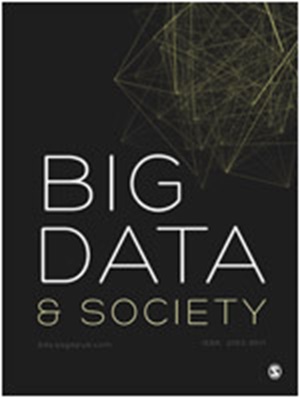操纵策略是政治邮件中的常态:来自2020年美国选举周期的30万封电子邮件的证据
IF 5.9
1区 社会学
Q1 SOCIAL SCIENCES, INTERDISCIPLINARY
引用次数: 13
摘要
我们收集并分析了2020年美国大选期间发送的30多万封政治电子邮件。这些邮件是由3000多个政治运动和组织发送的,包括联邦和州一级的候选人以及政治行动委员会。我们发现,在这个语料库中,操纵策略——使用某种程度的欺骗或点击诱饵的技术——是常态,而不是例外。我们衡量了发件人用来促使收件人打开电子邮件的六种具体策略。其中三种策略——“暗模式”——通过电子邮件用户界面积极欺骗收件人,例如,通过格式化“来自:”字段,这样他们就会产生错误的印象,认为邮件是正在进行的对话的延续。平均活跃发送者使用这种策略的时间为5%。其他三种策略,比如哗众取惑的点击诱饵——37%的活跃发件人使用这种策略——并不是直接欺骗,而是利用收件人的好奇心缺口,施加压力,迫使他们打开电子邮件。这可能会进一步暴露收件人在电子邮件正文中的欺骗行为,例如误导性的捐款匹配声明。此外,通过收集来自美国不同地区的电子邮件,我们发现发件人通过A/B测试改进了这些策略。最后,我们记录了违反隐私政策和收件人期望的发件人之间电子邮件地址的披露。累积起来,这些策略削弱了选民的自主权和福利,对那些数字素养较低的人来说,成本尤其高昂。我们在https://electionemails2020.org为记者和学者提供完整的电子邮件语料库,我们希望这将支持未来的工作。本文章由计算机程序翻译,如有差异,请以英文原文为准。
Manipulative tactics are the norm in political emails: Evidence from 300K emails from the 2020 US election cycle
We collect and analyze a corpus of more than 300,000 political emails sent during the 2020 US election cycle. These emails were sent by over 3000 political campaigns and organizations including federal and state level candidates as well as Political Action Committees. We find that in this corpus, manipulative tactics—techniques using some level of deception or clickbait—are the norm, not the exception. We measure six specific tactics senders use to nudge recipients to open emails. Three of these tactics—“dark patterns”—actively deceive recipients through the email user interface, for example, by formatting “from:” fields so that they create the false impression the message is a continuation of an ongoing conversation. The median active sender uses such tactics 5% of the time. The other three tactics, like sensationalistic clickbait—used by the median active sender 37% of the time—are not directly deceptive, but instead, exploit recipients’ curiosity gap and impose pressure to open emails. This can further expose recipients to deception in the email body, such as misleading claims of matching donations. Furthermore, by collecting emails from different locations in the US, we show that senders refine these tactics through A/B testing. Finally, we document disclosures of email addresses between senders in violation of privacy policies and recipients’ expectations. Cumulatively, these tactics undermine voters’ autonomy and welfare, exacting a particularly acute cost for those with low digital literacy. We offer the complete corpus of emails at https://electionemails2020.org for journalists and academics, which we hope will support future work.
求助全文
通过发布文献求助,成功后即可免费获取论文全文。
去求助
来源期刊

Big Data & Society
SOCIAL SCIENCES, INTERDISCIPLINARY-
CiteScore
10.90
自引率
10.60%
发文量
59
审稿时长
11 weeks
期刊介绍:
Big Data & Society (BD&S) is an open access, peer-reviewed scholarly journal that publishes interdisciplinary work principally in the social sciences, humanities, and computing and their intersections with the arts and natural sciences. The journal focuses on the implications of Big Data for societies and aims to connect debates about Big Data practices and their effects on various sectors such as academia, social life, industry, business, and government.
BD&S considers Big Data as an emerging field of practices, not solely defined by but generative of unique data qualities such as high volume, granularity, data linking, and mining. The journal pays attention to digital content generated both online and offline, encompassing social media, search engines, closed networks (e.g., commercial or government transactions), and open networks like digital archives, open government, and crowdsourced data. Rather than providing a fixed definition of Big Data, BD&S encourages interdisciplinary inquiries, debates, and studies on various topics and themes related to Big Data practices.
BD&S seeks contributions that analyze Big Data practices, involve empirical engagements and experiments with innovative methods, and reflect on the consequences of these practices for the representation, realization, and governance of societies. As a digital-only journal, BD&S's platform can accommodate multimedia formats such as complex images, dynamic visualizations, videos, and audio content. The contents of the journal encompass peer-reviewed research articles, colloquia, bookcasts, think pieces, state-of-the-art methods, and work by early career researchers.
 求助内容:
求助内容: 应助结果提醒方式:
应助结果提醒方式:


